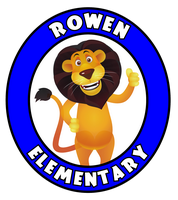3 Principles of Curriculum
1
Effective Curriculum Design evolves backward from clear goals to
acceptable assessment evidences to engaging and effective instruction
Far too many view curriculum as nothing more than a race around a track with the goal of covering as much content as possible. However, the purpose of curriculum is to show students how to use and investigate content. If students are to be able to transfer discrete knowledge and skills, they must receive practice in autonomous transfer and meaning making from the start, not at the end.
Therefore, effective curriculum design begins with clear goals – the performances we want students to master. In mathematics, for example, we want students to quantify and solve perplexing real-world problems. In history, we want students to construct valid and insightful narratives of evidence and argument. In language arts, we want student to successfully write for specific and demanding audiences and purposes. From clear goals, assessment evidences should be developed to make sure students are reaching the goal. Finally, a learning plan should be develop to help students grasp the knowledge, skills and understandings necessary to reach the goal.
2
All Students should experience a “thinking curriculum” focused
on big ideas and enduring understandings
Many in our culture believe that some people are born smart and others are not. Tragically, these proponents go on to argue that there is nothing we can do about it. However, the research demonstrates that it is possible to learn how to think and act intelligently. We now know that students can be taught to manage their own thinking and learning processes.
An well-designed curriculum should encourage students to think deeply. This kind of curriculum should use recurring essential questions to connect lessons, units and the entire school experience to these big ideas and enduring understandings that transcend grades. The curriculum should constantly provide students with the “larger picture”, the “why?” and the “so what?” Students should be able to confidently handle unfamiliar-looking tasks or problems; they should not be overwhelmed by unfamiliar tasks or parrot prior learning blindly and unthinkingly. Students should be able to show their work, explain their reasoning, apply concepts, interpret ideas, empathize with other’s opinions, and reflect on the effectiveness of their work.
3
The Best Results come from having a standards-aligned curricular system
Education is optimized for the greatest number of students when the curricular system is based on a clear set of components. The principal is chiefly responsible for ensuring that all of the required components of a standards-aligned curricular system are in place and working effectively. These components are a clear mission and vision, curricular philosophy, academic standards, big ideas and enduring understandings, curricular maps, cornerstone assessments with exemplars, analytic and longitudinal rubrics, diagnostic and formative assessments, suggested instructional strategies, materials and resources, suggestions for differentiation, educational technology, safety nets and troubleshooting process for struggling students, and a safe and supportive school environment.
